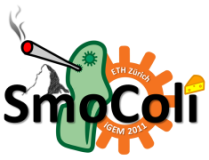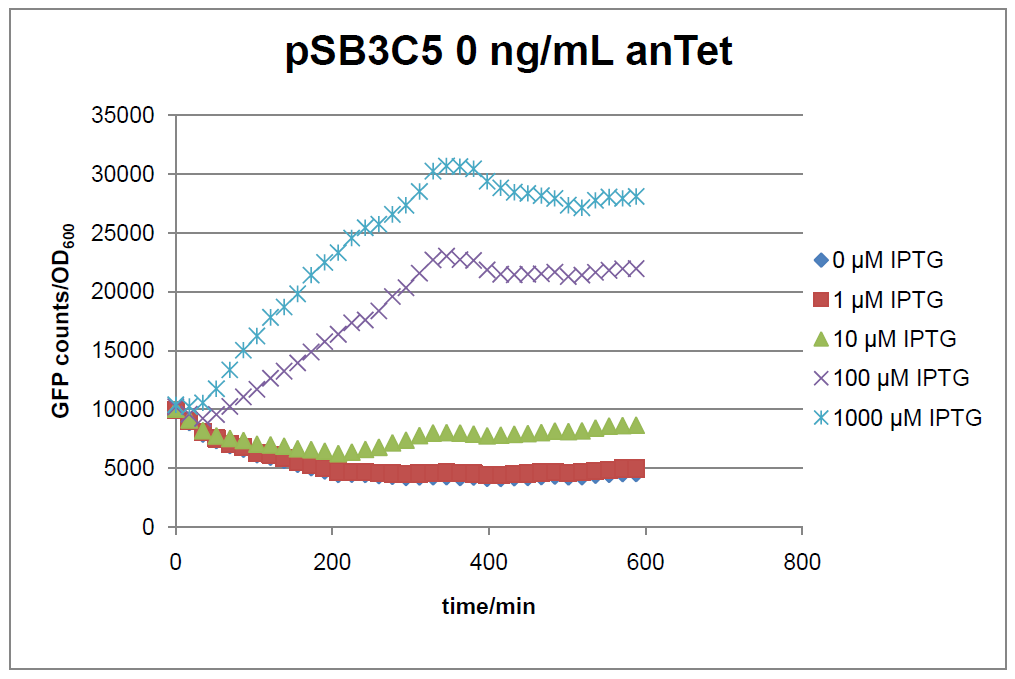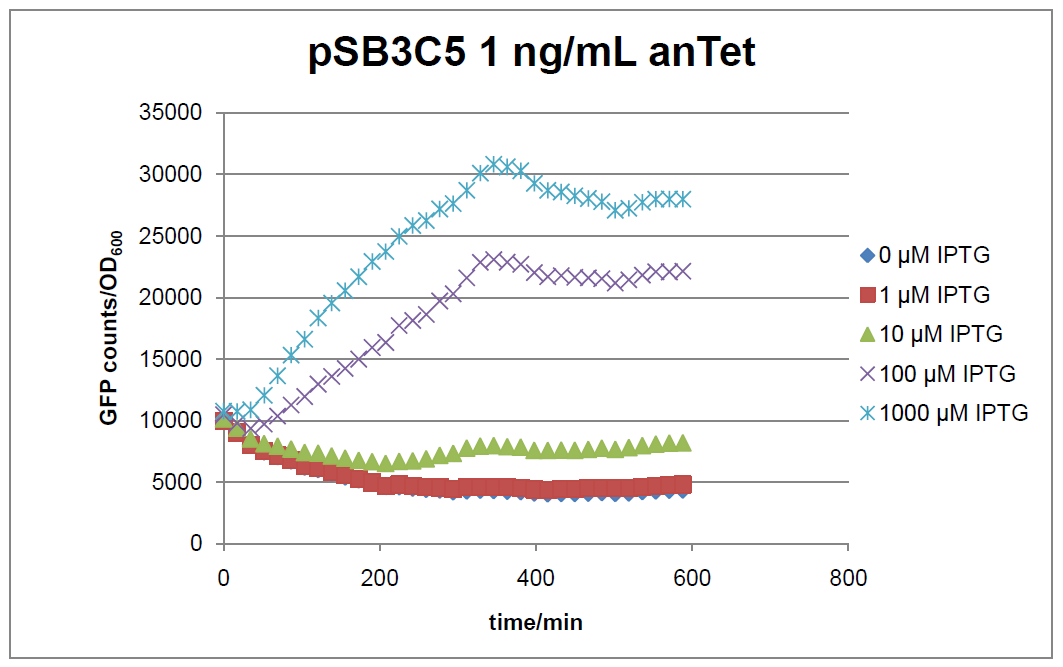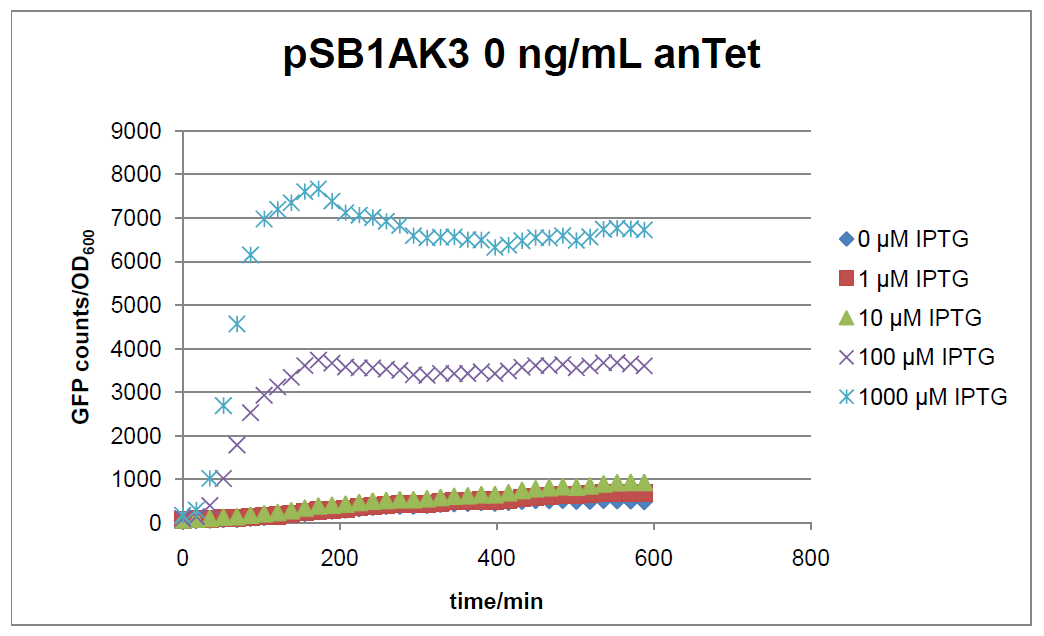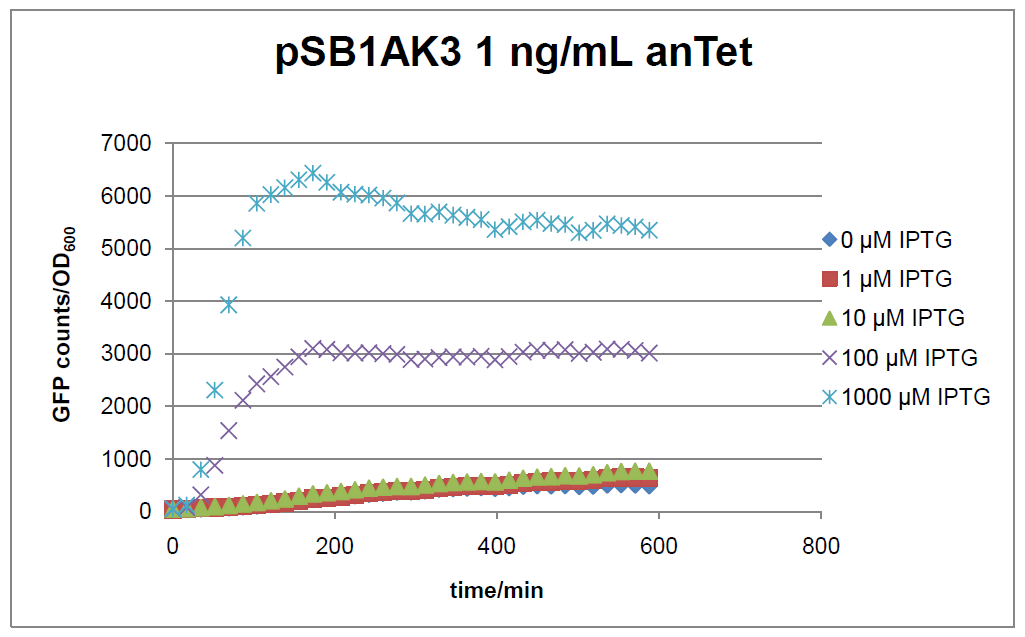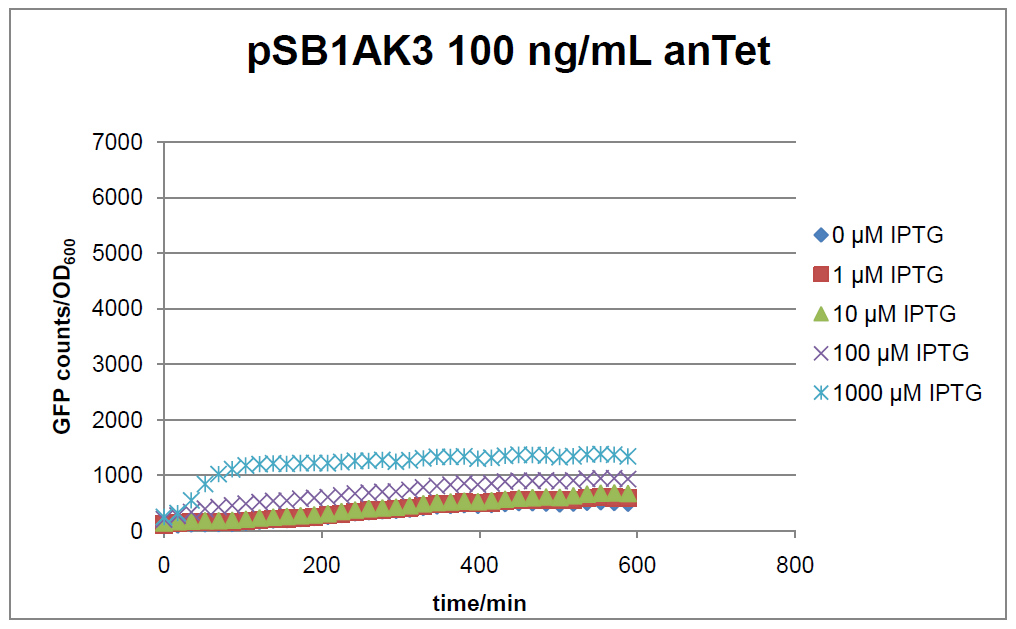Team:ETH Zurich/Achievements/Results
From 2011.igem.org
(→Results of BBa_K625000/BBa_K625001 characterization) |
(→Results of BBa_K625000/BBa_K625001 characterization) |
||
| Line 29: | Line 29: | ||
At a concentration of 100 ng/mL anhydrotetracycline, only a slight increase in fluorescence can be observed for increasing IPTG concentrations. We are supposing that the expression of ''lacI<sub>M1</sub>'' is fully induced at this level and thus the IPTG amount present in the system is not sufficient anymore to inhibit all of the LacI<sub>M1</sub>. | At a concentration of 100 ng/mL anhydrotetracycline, only a slight increase in fluorescence can be observed for increasing IPTG concentrations. We are supposing that the expression of ''lacI<sub>M1</sub>'' is fully induced at this level and thus the IPTG amount present in the system is not sufficient anymore to inhibit all of the LacI<sub>M1</sub>. | ||
| + | |||
| + | In the case where no anhydrotetracycline is present in the medium, there can still be observed a change in fluorescence depending on the level of IPTG. The same pattern of induction can be observed here as in the weakly induced systems. The reason for this is likely due to the leaky expression of the ''lacI<sub>M1</sub>'' gene, resulting in a small amount of LacI<sub>M1</sub> always present in the cells and inhibiting the GFP production. | ||
| + | |||
| + | After about 300 min for pSB3C5 and about 200 min for pSB1AK3, the cells enter stationary phase and the flourescence intensity and OD<sub>600</sub> do not increase anymore. | ||
Revision as of 03:52, 22 September 2011
| Experimental Results | |
| Experimental results for the characterization of our BioBrick parts. | |
Results of BBa_K625000/BBa_K625001 characterization
Figure 1: time course of fluorescence depending on different expression levels of the transcriptional regulator LacIM1. pSB3C5 was used as plasmid backbone for the test system.
Figure 2: time course of fluorescence depending on different expression levels of the transcriptional regulator LacIM1. pSB1AK3 was used as plasmid backbone for the test system.
A detailed description of the experimental setup for the characterization part can be found in the Biology section.
In general the test system for characterization of our BioBrick parts BBa_K625000 respectively BBa_K625001 worked as expected. In both system we can see that the fluorescence decreases with increasing amounts of anhydrotetracycline. This indicates that LacIM1 is induced and thus represses the expression of gfp. By addition of IPTG LacIM1 gets inhibited and therefore the GFP response increses. This tendency can be observed both in figure 1 and figure 2.
At a concentration of 100 ng/mL anhydrotetracycline, only a slight increase in fluorescence can be observed for increasing IPTG concentrations. We are supposing that the expression of lacIM1 is fully induced at this level and thus the IPTG amount present in the system is not sufficient anymore to inhibit all of the LacIM1.
In the case where no anhydrotetracycline is present in the medium, there can still be observed a change in fluorescence depending on the level of IPTG. The same pattern of induction can be observed here as in the weakly induced systems. The reason for this is likely due to the leaky expression of the lacIM1 gene, resulting in a small amount of LacIM1 always present in the cells and inhibiting the GFP production.
After about 300 min for pSB3C5 and about 200 min for pSB1AK3, the cells enter stationary phase and the flourescence intensity and OD600 do not increase anymore.
 "
"
